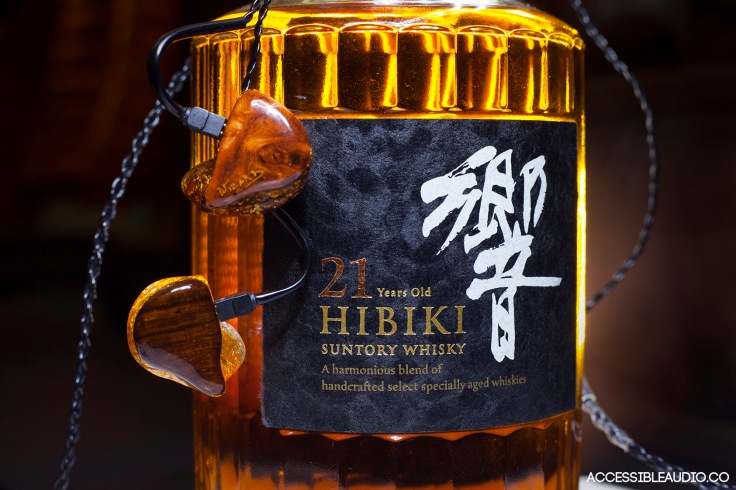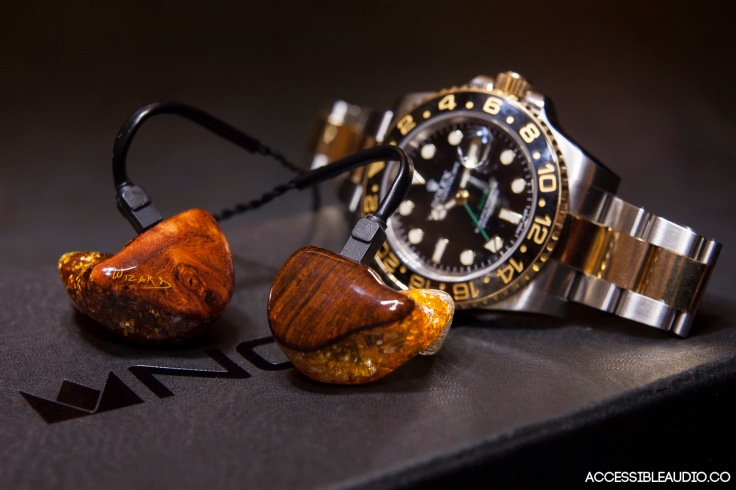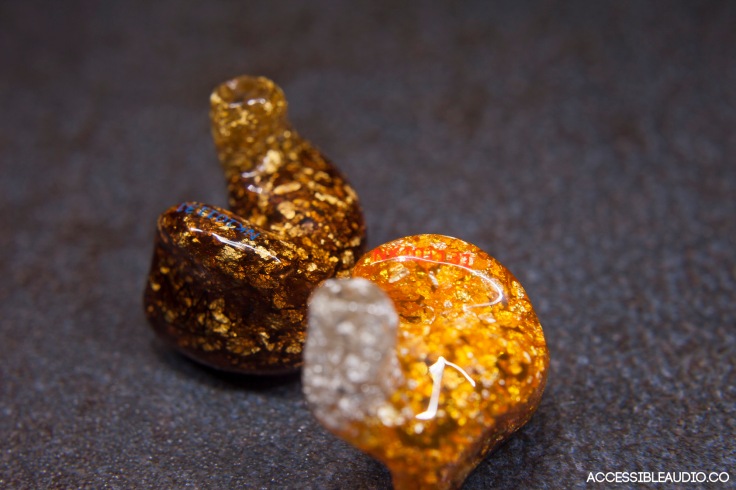
Noble Audio’s K10 is the IEM to get. A legendary classic in audiophile circles, this 10-driver IEM has a musical sound that works for all genres and if you want, can be made to custom fit your ears with your own choice of colours and materials.
Having been the owner of several excellent universal in-ear monitors, it was inevitable that the lust to own custom in-ear monitors (CIEMs) eventually got to me. Those with more than a passing interest in CIEMs will know that Noble Audio is synonymous with the best in this area. One of the reasons why I went with Noble was that their designs were simply peerless among other CIEM companies. I constantly saw highly original and striking Wizard (founder John Moulton) designs on Noble’s lookbook and on social media. Pairing the fascinating looks with the fact that the flagship model at the time – the Kaiser 10 (K10) was also the top-rated CIEM on Head-Fi at the time with well over 20 five-star reviews, and it seemed unlikely I would choose anything else.
But I wanted something more. At this summit level of CIEMs I also craved for a customized and personal experience, where I could be involved in the process. Some discerning audiophiles care about such things and are willing to pay a premium on owning products that embody both art and function on the highest level. Noble understands this better than anyone and hence offers the Prestige line, where the aesthetics aspect is taken to very lofty standards by CNC milling a solid block of exotic wood (or other glamorous materials) to the exact contours of the owner’s ear instead of using traditional acrylic materials. It went without saying that I initially opted for a pair of Prestige K10s.
Old Trees, Dripping in Gold
However, it turned out that the Prestige option was not possible for me, due to the shape of my ear canals, so I stuck with the conventional acrylic shell and exotic faceplates. ‘Conventional’ in Noble speak means having your faceplates be crafted out of Amboyna Burl and Cocobolo wood, and the acrylic shells dripping with gold and silver nuggets.
After finalising on the design, the excruciatingly long wait beckoned, but the good folks at Noble (Brannan and Sunny) were professionals through and through and took care of my many burning queries, and I was finally rewarded with these:

Receiving the K10 was an incredibly stimulating experience, complete with a stormproof Pelican case, a cleaning tool, a ‘license card’ with the owner’s name on it, and a pouch containing the impeccably made CIEM. Just a brief look at them indubitably imparts a luxurious, endearing quality that is akin to fine jewelry or watchmaking.
Working Together
The legendary K10s have the following configuration:
| 10 balanced-armature drivers per side
2 precision-tuned bass drivers 2 precision-tuned mid-frequency drivers 2 precision-tuned mid-/high-frequency drivers 2 precision-tuned high-frequency drivers 2 precision-tuned super-high-frequency drivers |
| 4-way design |
| Impedance <35 ohms |
I would not blame you for dreading that a design as complex as this would result in disastrous synchronization and cross-over issues, but this is wizardry we are talking about here. The K10 was conceived by Noble founder John Moulton (a.k.a. Wizard) before the company came into being, but only launched 5 years later to spearhead Noble’s first foray into the industry. It was designed ‘by ear first and graph second’ with the goal of creating a balanced-sounding flagship-calibre CIEM that people of diverse musical tastes and backgrounds would equally enjoy listening to. It was important to the Wizard for the K10 to not be a polarising flagship that would end up being only favored by fans of a specific music genre. Thus the emperor of Noble’s lineup was born with the noble purpose of satisfying the eardrums of all types of audiophiles.

Living Breathing Disco
As I was new to CIEMs, my shiny new K10s felt awkward, rigid, and intrusive for the first month or so. The situation improved dramatically over the months and now the twisting motion of getting them in feels second nature and the earphones also sit snugly in my ears. The build quality is faultless and they isolate well enough, you’re practically deaf in the subway or when crossing roads.
Firing up the K10s, I felt that there was a holographic imaging that just wasn’t there on the Shure SE846s, the textures were richer and the ‘3D-ness’ was more apparent. Coherency was divine, everything blended together and no frequency range stood out in particular. In short, everything was in perfect balance and solidarity. Among this cohesiveness were impressive details that did not jump out at you or begged to be heard. They lied subtly in the presentation, but when you decided to seek them out, they were always there.

The control is rather splendid, bass is north of neutral but at the same time clean and defined. 1980s dance grooves are especially enjoyable, with the classic Billie Jean particularly shining, and Sasha’s What Are You To Me? seriously thumping. From the sub-bass rumble dropping down real low in Jamie xx’s Gosh to the crooning of Joseph Arthur on Devil’s Bloom to the quirky Gronlandic Edit from Of Montreal, the K10 fills each track’s shoes perfectly, sounding perfectly at home from all the eclectic materials I put it through. The K10 goes from a live disco to a tranquil chamber with a single instrument without a stutter or hint of musical xenophobia, no sides are picked, there really is just the music.
Mesmerized
The longer you let the K10 do its thing, the more it caters to your total immersion, and the more it evokes a ‘bathed in music’ sensation in you. It is tuned with dynamic musical enjoyment in mind, and not draconian, textbook neutrality. If “Hi-Fi” strictly refers to absolute tonal balance and the pure reconstruction of a recording, then this is proudly not “Hi-Fi”. After all, we as humans are not frequency response graph-reading machines, and I would take basking in luscious sound over the platitude of ruler-flat accuracy any day.

The K10’s engrossing coherence is at its finest when playing complex passages. On John Mayer’s live rendition of Ray Charles’s I Don’t Need No Doctor, the guitar solos swerve around, perfect-layered as one singular body. This is again heard on Sphongle’s Dorset Perception, a track littered with indian bells along with tremendous amounts of layers and minute details. On this particular track the K10 stays musical while keeping all the bombastic bass impacts and maintaining more or less a balanced profile. It’s not unusual to find your brain smack down middle of a complex track with a maelstrom going off around but still hear the distinctive shimmers of guitar lines sparkling in the background. These phones never lose their cool no matter how chaotic it gets.
Coming of Age (Yes, I know this is the Katana’s marketing tagline)
However, too much goodness can be a less-than-perfect thing, and the K10 is voiced so pleasantly balanced that at times I feel a certain hardness and edginess that the SE846 is capable of bringing is smoothed over just ever so slightly. For example, the impact of each drum hit on The Whitest Boy Alive’s Timebomb lacks the razor sharpness of the SE846. Make no mistake about it, the dual bass drivers of the K10 will and can send your brain into a rattling mess if necessary, but a certain aggression is lost amidst the coherency, and I find myself reaching for the SE846 when I want to brandish anger and bang my head until it falls off. In Marilyn Manson’s Third Day of a Seven Day Binge, screams at the climax have drums so stately hammering in the background and everything in perfect balance that it never spills into the haywire, raw and frenzy territory like the SE846 can. To be fair, this speaks volumes about an IEM’s capabilities when you have to forcibly interpret its strengths into a shortcoming and feebly justify it with the bias of taste. The K10 is like the angsty teenage emo kid all grown up, with the rough edges of his personality blunted for the survival in society. However, it must be stated that this observation stems only from a certain idiosyncratic disposition (for aggressive rock), your mileage may wildly vary. In the end it is more than acceptable that strong character is traded for maximum versatility.

But then as I was contemplating all these needless worries, I discovered that 3 hours have passed, and the K10s were still in my ears. This is a testament of how utterly non-fatiguing the sound is, and how well it works for any genre of music. The longer you listen, the more it shows you that it is a maestro of anything you throw at it. Another amazing feat that the K10 pulls off is that you can crank up the volume endlessly, and it will never distort. In fact, the K10 is a real threat to your hearing because they sound so good at any volume and never loses its quality, that you continue to increase the volume after you got used to the previous increase, and it plays well with almost all types of music so it’s not like you have a reason to stop. I regularly find myself listening louder and louder, all the while marvelling at the absolutely chameleonic abilities of the K10. There is no better way to lose your hearing – this is the most heavenly way for your senses to go. The K10 might sound mundane during the warm-up stages but soon all the sweet music it effortlessly renders grows on you and becomes an addiction, to the point where you can’t take the IEMs off. The struggle is real.
However, I should mention that the upper midrange of the K10 does sound a bit hot in comparison after the Vega entered the picture, and the soundstage is also less expansive. It is still a very listenable IEM due to its complete lack of sibilance and jack-of-all-trade adaptability, it’s just not as ‘purpose-built’ as the Vega is in this aspect.

Conclusion
I ordered my K10 near the end of its product life, right before its Katana sibling and successor – the Kaiser Encore, stole much of the spotlight from it. Given its years of illustrious history, naturally I have already heard and read so much on the K10 and knew what to expect. What I eventually got exceeded all my high expectations.
The K10 was first launched in October 2013, and the top-of-the-line IEM space has gotten much more saturated with the competition a lot more fierce than before. Although there have since been many characterful and specialised IEMs, to be honest it is hard to imagine an IEM that sounds more balanced and versatile than this even after all these years. The K10 is a perfection unto itself, seamlessly coherent and easy-going; and no future releases, including the Kaiser Encore, are going to tarnish that reputation. Despite its discontinuation, the K10 will always have its place on a special throne in the IEM hall of fame, in its own niche, shining.



Leave a comment